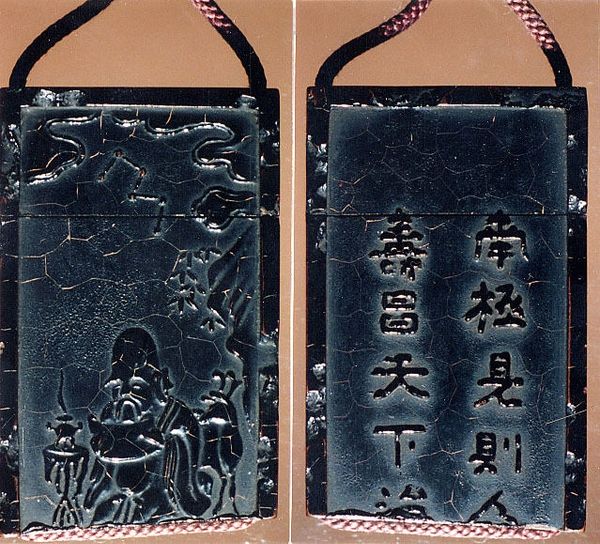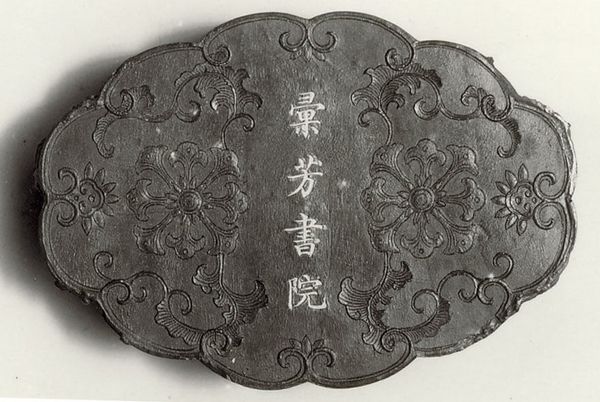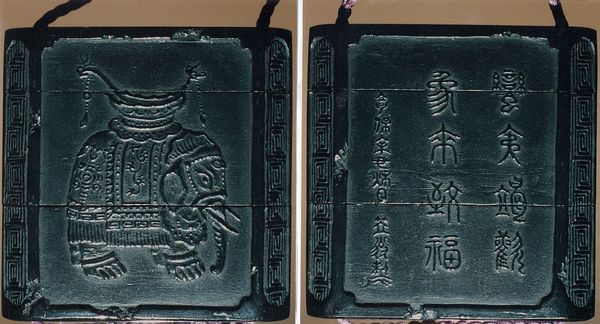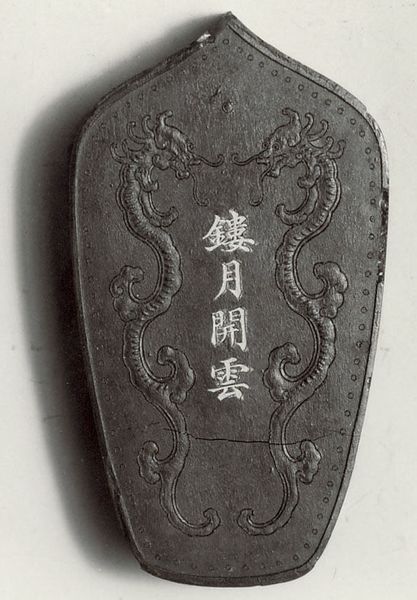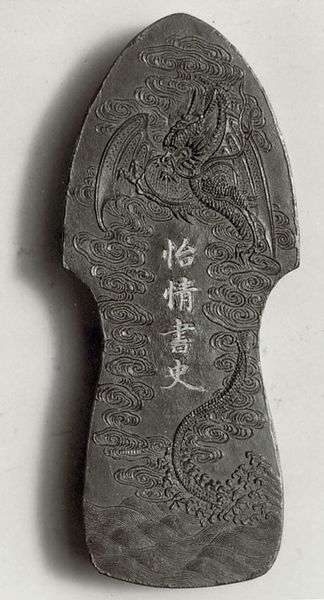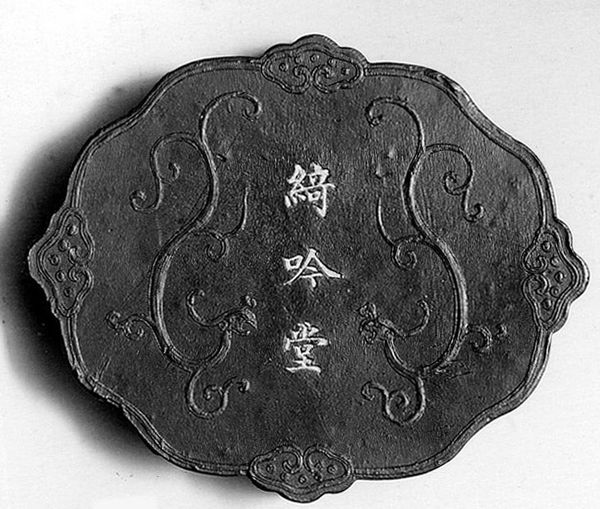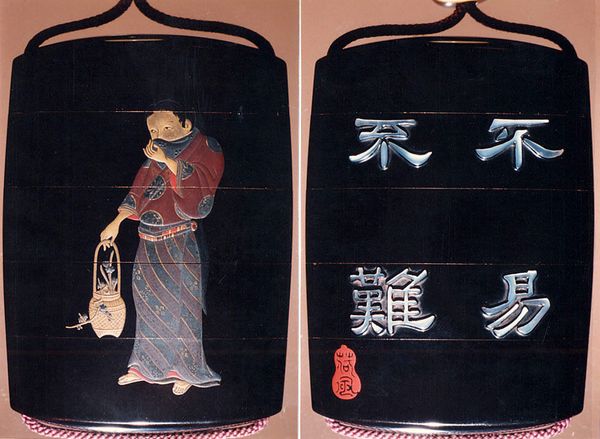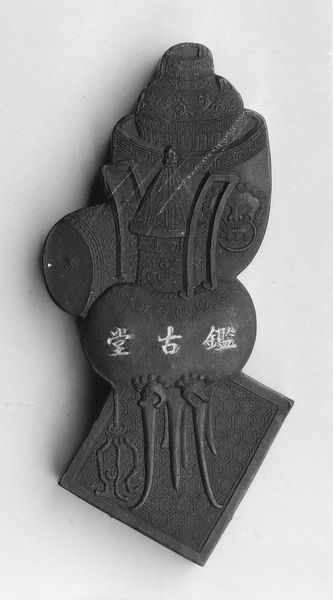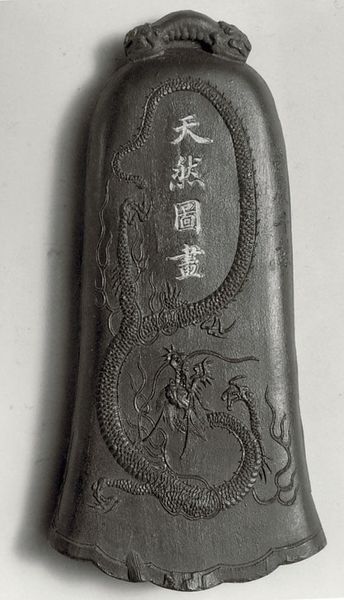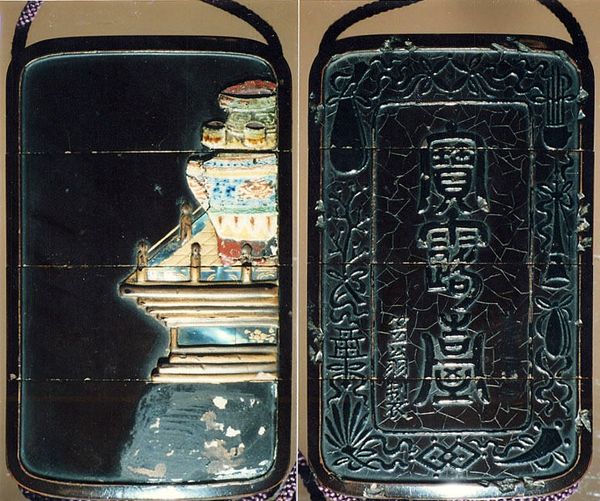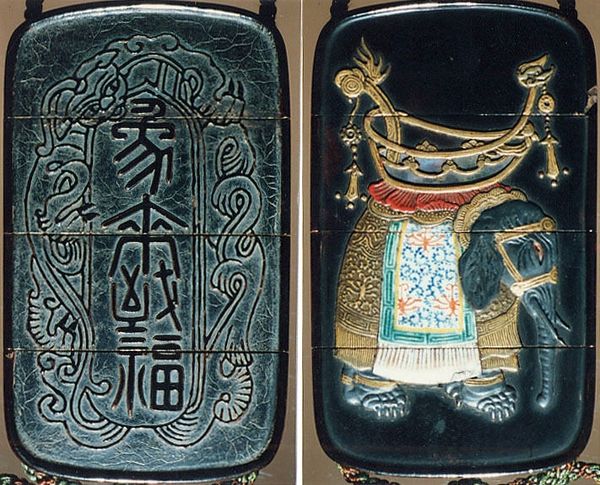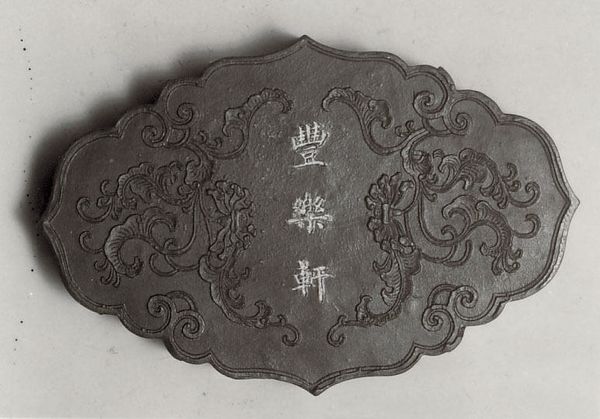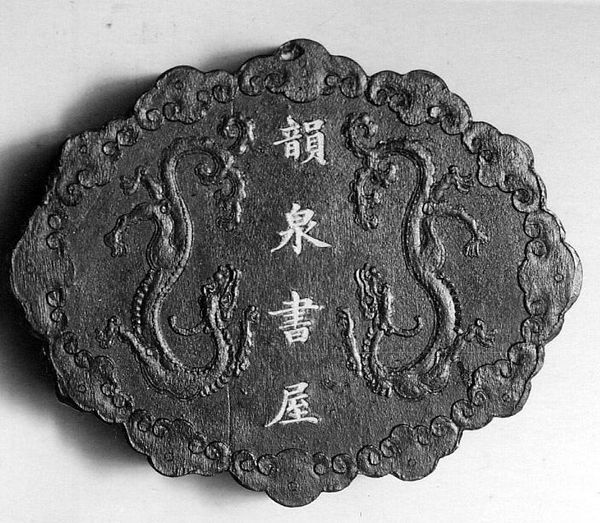
Case (Inrō) in the Shape of an Ink Stick with Design of Hotei (Putai) (obverse); Musical Instruments (reverse) 1790 - 1899
0:00
0:00
carving, relief, sculpture, ivory
#
carving
#
sculpture
#
asian-art
#
relief
#
japan
#
sculptural image
#
figuration
#
sculpture
#
orientalism
#
24_meiji-period-1868-1912
#
decorative-art
#
ivory
#
decorative art
Dimensions: 2 7/16 x 2 7/16 x 9/16 in. (6.2 x 6.2 x 1.5 cm)
Copyright: Public Domain
Editor: Here we have a piece titled "Case (Inrō) in the Shape of an Ink Stick with Design of Hotei (Putai) (obverse); Musical Instruments (reverse)," made between 1790 and 1899 by Shibata Zeshin. It appears to be crafted from carved ivory. I’m struck by how it looks almost like a coin or a medallion. How do you read this artwork? Curator: The duality of its function and design invites a detailed semiotic analysis. On one side, the figure of Hotei, the jovial god of contentment, is rendered in low relief. Note how the artist used the smooth curvature of the ivory to suggest depth, almost mimicking a three-dimensional form. Now, consider the reverse... Editor: Yes, it has an array of musical instruments depicted around what looks like some inscribed text. Curator: Precisely. Each instrument, meticulously carved, becomes a signifier of cultural sophistication and artistic accomplishment. What is particularly interesting is the interplay between the figuration of Hotei – a symbol of Zen Buddhism–and the instruments associated with worldly arts. Do you notice how the cracks in the surface serve to underscore the temporal aspect, layering the art piece with an indication of age and perhaps the influence of environment? Editor: So, the composition guides us to juxtapose spiritual contentment with artistic expression, the formal cracks contributing to an understanding of value and time? Curator: Indeed. Furthermore, the form itself, shaped like an ink stick case, adds another layer of meaning, linking the piece to calligraphy and painting, underscoring the relationship between different Japanese artforms and practices. We could consider how the formal choices elevate a practical object into something of beauty. Editor: I never thought about decorative art in terms of visual symbolism before! Now I see how the material, form and the images all work together. Curator: Precisely; examining those inherent formal qualities is key to unlocking further dimensions and richer interpretations.
Comments
No comments
Be the first to comment and join the conversation on the ultimate creative platform.
